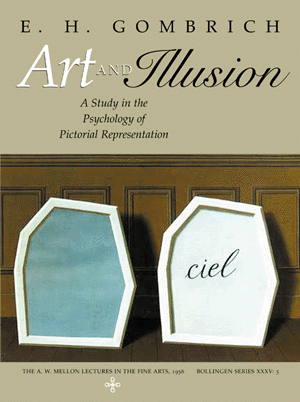
Considered a great classic by all who seek for a meeting ground between science and the humanities, Art and Illusion examines the history and psychology of pictorial representation in light of present-day theories of visual perception information and learning. Searching for a rational explanation of the changing styles of art, Gombrich reexamines many ideas on the imitation of nature and the function of tradition. In testing his arguments he ranges over the history of art, noticing particularly the accomplishments of the ancient Greeks, and the visual discoveries of such masters as Leonardo da Vinci and Rembrandt, as well as the impressionists and the cubists. Gombrich's triumph in Art and Illusion arises from the fact that his main concern is less with the artists than with ourselves, the beholders.
"Ernst Gombrich is indeed Master Scholar of the highest distinction. He has explored the mysterious links between perception and art--adding to both in the process, with a score of superb books on the history and philosophy of art. . . . [Art and Illusion's] riches can only be appreciated by careful reading, more than once."--Richard Gregory, Perception
"[Sir Ernst's] own theory of perception, put forward in Art and Illusion . . . arguably his most important book, was controversial in almost every detail. But it brought the topic of the visual back to the centre of the history of the visual arts, from where it had been strangely displaced."--The Economist
"I have learned a great deal from this volume, but what I shall remember about it is the author's warmth and wit, the fabulous range of his references and the richness of personality that lies behind the whole performance."--The New York Times
Gombrich argues that the Greeks fundamentally changed the course of art. Under them, it became more casual, art for art's sake, instead of magical images filled with power. Over time, with each new generation, experiments with art allowed artists to discover new tricks to make us believe in the 'reality' of what they painted. This does not mean that artists are painting what they literally see; instead, they have a repertoire of conventions that we as viewers have learned to interpret as a real represenation of the thing painted. Gombrich emphasizes both the role of the artist as the presenter of a painting, and even more, the role of the beholder in interpreting what is painted.
This is primarily based on Western art, though Gombrich does also investigate Asian art and it's differing philosophy. Both add to his hypothesis that seeing is interpreting; that there is no way to portray exactly what is seen with no interpretation; and that art has developed the way it has to give us a possible interpretation that a paintin is realistic, and it does so through a series of tricks.
An excellent book for someone interested in the theory of visual images, and it is pretty accessible, though a knowledge of art history is certainly helpful. (less)
'Books > nonfiction' 카테고리의 다른 글
| The Souls of Black Folk (0) | 2017.05.23 |
|---|---|
| THE MAKING OF THE ENGLISH WORKING CLASS (0) | 2017.05.23 |
| A THEORY OF JUSTICE (0) | 2017.05.23 |
| THE MIRROR AND THE LAMP (0) | 2017.05.23 |
| the mismeasure of man (0) | 2017.05.23 |
